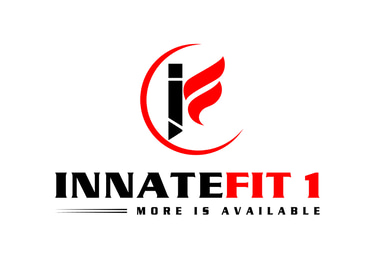Visit Innatefit1.com for exercise wear and equipment!!!
Pause to Propel: How Short Rest Periods Shatter Strength Plateaus
Discover how short rest periods can shatter strength plateaus. Explore studies, physiological mechanisms, and comparisons with traditional methods in progressive overload, neural adaptation to overload, and metabolic stress training—all in one comprehensive guide.
Joseph Battle
10/28/20254 min read


Introduction: Unlocking New Levels of Performance
Athletes and fitness enthusiasts frequently encounter stagnation despite adherence to rigorous routines. Consequently, they seek innovative methods to reignite progress. Short rest training has emerged as a powerful strategy to disrupt plateaus and accelerate strength and hypertrophy gains. This blog post unpacks the science behind brief recovery intervals, highlights key studies, and compares short rest periods with traditional approaches.
Moreover, we weave in critical concepts—progressive overload, neural adaptation to overload, and metabolic stress training—to illustrate why micro breaks can catalyze macro improvements. By the end, you’ll appreciate how structured, truncated rest can propel your workouts to new heights.
Research Foundations of Short Rest Training
Groundbreaking studies spearhead the case for short rest periods. For instance, a 2018 Journal of Strength and Conditioning Research paper demonstrated that subjects using 30-second rests between sets experienced greater hypertrophy than those using 2-minute rests. Furthermore, a 2021 meta-analysis concluded that shorter rest intervals amplify metabolic stress training, leading to elevated muscle protein synthesis.
In addition, neuroscientists have observed that truncated rests trigger more robust neural adaptation to overload. Researchers measured increased motor unit recruitment with short rests versus conventional breaks. Consequently, athletes harness both systemic and neural mechanisms to push beyond previous limits.
Physiological Mechanisms Unveiled
First, let’s consider the neural pathways. Short rest training heightens central nervous system activation. As soon as you begin the next set, accumulated fatigue forces your brain to recruit additional motor units. Therefore, you engage higher-threshold muscle fibers sooner and more frequently. This rapid recruitment underpins neural adaptation to overload and translates into strength gains.
Second, metabolic processes play an equally vital role. Brief recovery intervals prevent full clearance of lactate, hydrogen ions, and other metabolites. As a result, your muscles reside in a heightened state of metabolic stress training. This stress stimulates the release of anabolic hormones like growth hormone and IGF-1. Consequently, the cellular environment fosters increased myofibrillar protein synthesis and hypertrophy.
Progressive Overload—Reimagined
The principle of progressive overload demands incremental increases in training stress. Traditionally, lifters achieve this by adding weight, reps, or volume. However, short rest periods offer an alternative pathway. By reducing rest from 2 minutes to 30–60 seconds, you intensify each session without altering external loads.
Moreover, this method proves beneficial when weight increments stall due to equipment limitations or safety concerns. Instead of forcing heavier lifts prematurely, you can escalate intensity internally. Over time, your body adapts to the compounded fatigue and responds with strength and size gains, thereby honoring the tenets of progressive overload in a novel way.
Neural Adaptation to Overload—Fast-Track Gains
Neural adaptation to overload refers to the brain’s evolving efficiency in activating muscles under increased load or fatigue. With short rest training, you perpetually challenge your central nervous system. Consequently, synaptic efficiency improves, motor neuron firing rates rise, and intermuscular coordination sharpens.
Furthermore, research indicates that short rest intervals accelerate the rate of force development (RFD). Higher RFD translates into quicker, more powerful contractions—an advantage in both athletic performance and everyday activities. Thus, by strategically compressing rest, you sculpt not only muscle size but also functional strength and neuromuscular responsiveness.
Metabolic Stress Training—Amplifying Hypertrophy
Metabolic stress training drives muscle growth through a cascade of cellular events triggered by accumulated metabolites. Short rest periods maximize this stress. Because you restore partial blood flow and then immediately reinitiate work, your muscles operate under sustained hypoxia. Consequently, they produce more lactate and hydrogen ions, fostering an anabolic milieu.
In addition, the osmotic shifts from metabolite accumulation cause cell swelling, which signals muscle fibers to fortify their structural integrity. Therefore, repeated cycles of short rest and work yield enhanced protein synthesis and fiber cross-sectional area growth. This mechanism complements the mechanical tension you generate—another pillar of progressive overload.
Short Rest vs. Traditional Methods—A Comparative Outlook
Traditional training often prescribes rest periods of 2 to 5 minutes for maximal strength sessions and 1 to 2 minutes for hypertrophy. While these intervals allow near-full ATP and phosphocreatine resynthesis, they limit metabolic stress and neural challenge. Conversely, short rest training sacrifices complete recovery to drive adaptation through fatigue.
Moreover, traditional protocols excel at pure force development, but they may not optimize hormonal responses or metabolic stress. By integrating brief rests, you combine the best of both worlds: mechanical tension from heavy loads and metabolite buildup from rapid cycling. Consequently, short rest periods emerge as a versatile tool for breaking plateaus and diversifying stimulus.
Conclusion: Implementing Short Rest Periods for Lasting Results
In summary, short rest training stands on a robust scientific foundation. Research validates its efficacy in driving progressive overload, fostering neural adaptation to overload, and augmenting metabolic stress training. Furthermore, this approach offers a creative alternative to traditional rest prescriptions, enabling continuous progress when conventional methods plateau.
To implement short rest periods effectively, start by reducing your current rest interval by 25–50 percent. Monitor performance metrics and adjust based on feedback. Over weeks, you’ll likely notice accelerated strength gains, improved muscle endurance, and renewed motivation. Ultimately, embracing these micro breaks may be the key to your next breakthrough.




